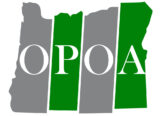

Dave Hunnicutt
OPOA Issues Public Service Announcement
Over the last two weeks, Sam and I have posted blog articles relating to the recent ice storm and falling trees. Following up on Sam’s article today on the City of Portland’s tree ordinance, this will be the last “tree” post from us for a while – we promise. But there’s something that needs to be said, and I’ll close with a public service announcement for all humans worldwide at the end of this post.
In Sam’s article, she mentions Portland’s tree ordinance, which requires Portland property owners to seek a permit from the City before removing a tree from their property. Obviously, when a tree falls during an ice storm, getting a permit to remove it seems a little pointless, doesn’t it? Unless the real reason the City is demanding the permit is to enhance the public fisc by forcing the property owner to cough up money for a needless review of Mother Nature’s bad act.
Unfortunately, that’s not the worst of it. The real danger in a tree ordinance like Portland’s is that it not only requires the property owner to get a permit to remove a tree, but it also requires the property owner to replace the tree with a new one, and to maintain that tree. This starts to put Portland’s ordinance in some murky constitutional danger.
Portland code raises Constitutional questions.
We’ve written in the past about the various types of state and local regulations that are addressed by the Takings Clause of the Fifth Amendment to the US Constitution. The Supreme Court has created different categories for different types of property regulations, and applied different tests to each type of regulation to determine whether the regulation requires the government to pay just compensation to the property owner.
A typical zoning law limits what a property owner can do on their property. By zoning and regulating property, the City is limiting the development options of the property owner – basically telling the owner how they can and cannot use their land.
In a challenge to a zoning law, the Supreme Court has created a test that requires the property owner to prove that the zoning laws limit the use of the property to the extent that the laws destroy all or nearly all value of the property. For example, if a Portland property owner is told that the zoning on their property allows them to build one home, but not a McDonalds, there is likely not going to be a constitutional claim because the property retains significant value.
That’s why most zoning laws that simply limit uses and take value from a property don’t trigger a constitutional requirement to pay just compensation to the property owner. The property owner loses value, but they don’t lose all value. Hence no taking.
But there’s a second category of property restrictions that concern the Supreme Court, known as “physical occupations”. A taking by physical occupation occurs when a government regulation forces a property owner to allow their property to be permanently occupied.
For example, in a famous case known as Loretto v. Teleprompter Manhattan CATV Corp., the United States Supreme Court held that a law that required a property owner to allow a cable TV company to install a cable on an apartment building over the objection of the property owner was a physical occupation, even though the cable occupied an extremely tiny portion of the property and didn’t interfere with the property’s use.
As the Supreme Court noted, a law that allows the government or another private party to physically occupy your property is “the most serious invasion of an owner’s property interests.” The property owner loses the right to possess and use the occupied space, has no power to exclude the occupier, can’t lease the occupied space to others, and can’t use the occupied space for a nonpossessory use.
Essentially a physical occupation destroys the property owner’s ability to do anything with the occupied space. It is the most extreme form of taking.
Is Portland’s tree code a physical taking?
So what kind of taking is Portland’s tree ordinance? Remember, not only does Portland’s ordinance deprive the property owner of the right to control their property by removing trees they don’t want (see Sam’s article), it also forces the property owner to replace a tree that has been removed.
Let’s see – I have to get a permit to take down a tree on my private property that I don’t like or that creates a danger to my home or family, and after I take down the tree, I have to replace it with a tree approved by a City bureaucrat, and then I have to maintain that tree according to City standards, and if I don’t want that tree, I can’t cut it down.
That sounds an awful lot like a physical occupation, doesn’t it? It sure does to me.
OPOA is looking for a property owner who is being forced to replace a tree that fell during the storm.
With this in mind, OPOA is interested in testing the theory. It doesn’t have to be Portland – other Oregon cities have the same requirements. If you’re in that situation, contact us.
Finally, if you’ve made it this far, here’s our public service announcement – NEVER BUY PROPERTY IN THE CITY OF PORTLAND OR MULTNOMAH COUNTY! It simply isn’t worth the time and hassle they’ll put you through. For the sake of your peace of mind and sanity, not to mention your pocketbook, just don’t go there, or you may end up like this poor property owner.
The opinions expressed in this post are those of the author and do not represent the opinions or positions of any party represented by the OPOA Legal Center on any particular matter.

Thanks, keep up the good work!